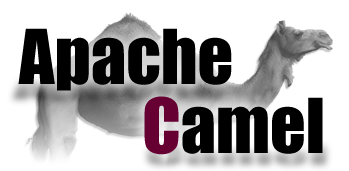Apache Camel Tutorials
In this detailed Resource page, we feature an abundance of Apache Camel Tutorials!
Apache Camel is an open source framework for message-oriented middleware with a rule-based routing and mediation engine that provides a Java object-based implementation of the Enterprise Integration Patterns using an application programming interface (or declarative Java domain-specific language) to configure routing and mediation rules. The domain-specific language means that Apache Camel can support type-safe smart completion of routing rules in an integrated development environment using regular Java code without large amounts of XML configuration files, though XML configuration inside Spring Framework is also supported.
Camel is often used with Apache ServiceMix, Apache ActiveMQ and Apache CXF in service-oriented architecture projects.
If you wish to build up your Apache Camel knowledge first, check out our Apache Camel Hello World Example.
Apache Camel Tutorials – Getting Started
Simple examples based on the Apache Camel
- Discovering the power of Apache Camel
These last years, ESB software has been getting more and more popular. If most people usually know what is an ESB, they are fewer to clearly understand the exact role of the different components of such architecture. - Apache Camel Components Example
In this article, we will see an example of registering a component using spring as well as manually. We will also know some example of camel core components. - Load balancing with Apache Camel
In this example we will show you how to use Apache Camel as a load balancer for your system. In computer world a load balancer is a device that acts as a reverse proxy and distributes network or application traffic across a number of servers. Load balancers are used to increase capacity (concurrent users) and reliability of applications.
Apache Camel Tutorials – Functions
Learn the basic functionalities of the Apache Camel framework
- Apache Camel Aggregator Example
In this article, we will see an example of Aggregator using Apache Camel. We will create an order with two different types of items and shall see how these items are processed individually to get the price of each one and calculating the total price of all items of this order by using aggregation strategy. - Apache Camel Timer Example
A timer component generates events which in turn triggers the endpoint that follows and generate messages. It uses uses the JRE’s built-in timer mechanism to generate message exchanges at regular intervals. - Apache Camel Routing Tutorial
Here in this Apache Camel Routing Example, we will learn about the different way to configure the camel route for different purposes. - Apache Camel Splitter Example
In this article, we will see an example of Splitter using Apache Camel. We will see an example of how we can use Apache Camel‘s Splitter to split an order into its items and process each item individually. - Apache Camel Exchange Example
Camel Exchange represents an abstraction for an exchange of messages which involves a request message and its corresponding reply or an exception message.
Apache Camel Tutorials – Integrations
Learn how to use Apache Camel with other frameworks and web services
- Apache Camel Spring Example
Spring is the inversion of controller framework. Spring’s power comes in the way one can configure a bean and wire the dependencies. Camel route itself is a mix of various components, spring becomes a natural fit in Camel’s journey. In this article, we will see how spring supports camel using some examples. - Apache Camel XPath Example
In this article, we will look into examples of XPath. We will use XPath to create a Predicate in a Message Filter. - Apache Camel ActiveMQ Example
In this article, we will see some example of ActiveMQ component. Apache activeMQ is one of the most popular open source JMS provider. We will use it to send message to a JMS Queue or Topic and consume messages from a JMS Queue or Topic. - Apache Camel CXF Example
In this article we will see an example of Apache Camel CXF. We will explore Camel’s capabilities for interacting with SOAP web services, which are commonly used in integration technology. Apache CXF is an open-source, fully featured Web services framework. It originated as the combination of two open-source projects: Celtix and XFire so CXF was derived by combining “Celtix” and “XFire”. - Adding WS-Security over soap using Apache Camel
With Apache Camel, it is easy to work with soap web services (especially if you use Apache CXF), but handling with WS-Security can be tricky. The idea is to create an xml template with all required information (including login and password) and add the template to the soap header. - Apache Camel AMQP Example
In this article, we will see an example of AMQP implementation of Apache ActiveMQ using Apache Camel. - Introducing OpenHub framework
This article introduces OpenHub framework – new open-source integration solution based on Apache Camel. The article responds to questions why you should care about another integration framework, what are strong/weak properties and how to start a new project with OpenHub. - Asynchronous communication made by OpenHub framework
We introduced OpenHub framework in the previous part of this series. This part shows one of the most powerful feature of the framework – asynchronous messaging model. Asynchronous communication between systems is used when source system can’t wait for the response of the target system. - OpenHub Framework – Next Interesting Features
This article will introduce some other interesting features in more detail and it will show the reasons why OpenHub can be a good choice for your integration project.
[undereg]

